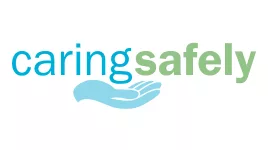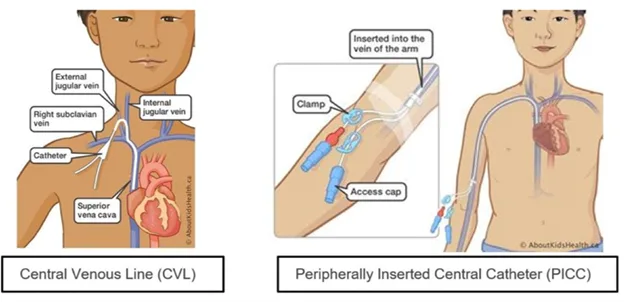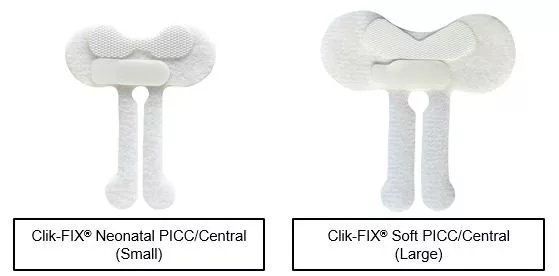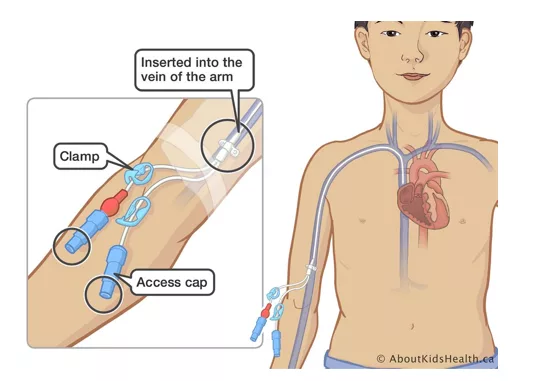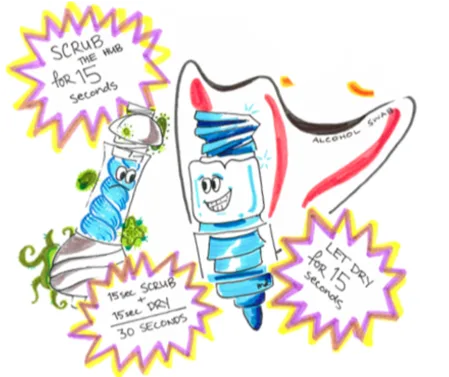SITUATION:
This QuickHit was developed in response to a Connected Care CVAD workshop, where home care nurses expressed uncertainty regarding the contents of an emergency CVAD kit.
BACKGROUND:
Many children with medical complexity rely on CVADs in home and community care for long-term intravenous therapy including medication administration, parenteral nutrition, dialysis, hydration, and blood sampling. Types of CVADs include central venous lines (CVL), peripherally inserted central catheters (PICC), and ports.
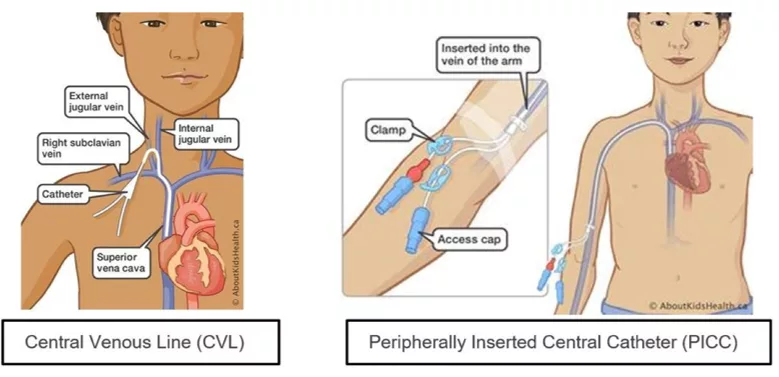
Complications may occur with a child’s CVAD, including catheter damage, dislodgement or accidental removal of the line, loss of the sterile cap, or loosening of the dressing. While many of these situations can be mitigated with attentive care, they are often unpredictable. Therefore, it is essential that a child with a CVAD (e.g., CVL, PICC and/or an accessed Port) should always have an emergency CVAD kit readily available to facilitate prompt management of complications, reduce the risk of infection, and ensure timely intervention to protect the child’s health and safety.
ASSESSMENT:
The contents of the emergency CVAD kit should match the supplies the child routinely uses. For example, since there are different types of CVAD dressings, the kit should include the specific dressing the child normally requires.
The image below outlines the typical contents of a CVAD emergency kit:
- Pair of clean gloves: to maintain basic cleanliness when handling the line or supplies in non-sterile situations.
- Padded clamps (one per lumen): to clamp the line as close to the patient as possible if the line breaks or leaks. If clamps are unavailable, fold the line in half and secure it with tape to mimic clamping.
- New sterile cap (one per lumen): to replace a cap if it falls off. For double lumen lines, carry two spare caps at all times.
- New sterile dressing: to cover the line’s exit site if the dressing falls off.
- Alcohol swabs: to clean external surfaces of the line, such as the ends of the caps, hubs, or any visible areas of concern (e.g., cracks).
- Sterile gauze: to cover external portions of the line or to apply pressure at the exit site if needed.
- Tape: to secure gauze around the line or to fold and tape the line in half if you do not have clamps.
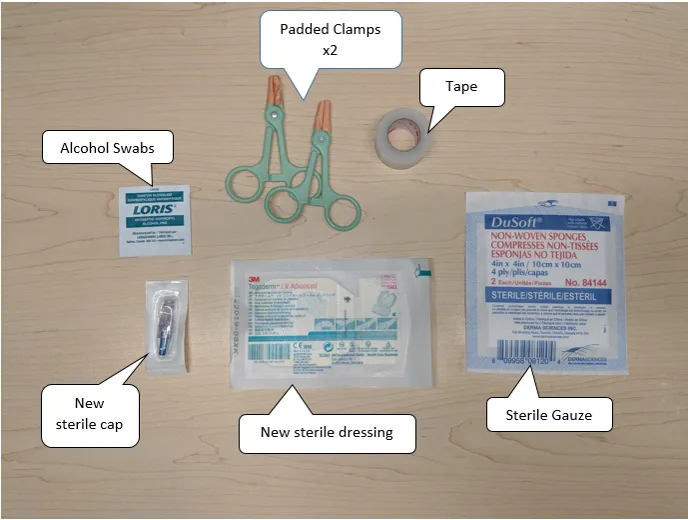
RECOMMENDATION:
To support the safety and well-being of children with CVADs, an emergency CVAD kit should always be readily available and properly maintained. The following recommendations outline how to verify the presence and completeness of the emergency CVAD kit as part of your routine care:
- Confirm that families have an emergency CVAD kit during your safety check at the start of each shift.
- Check the contents of the emergency CVAD kit at the start of your shift and before any travel with the child.
- Assemble an emergency CVAD kit using appropriate supplies in a clean zip-lock bag if one is missing or incomplete.
- Review how to use the emergency CVAD kit by referring to the ‘Complications’ section of this AboutKidsHealth article or the instructional video provided by SickKids Hospital.
More Information
For additional information on how to heparin lock a central venous access device, visit AboutKidsHealth, or consider a Connected Care Live consult.

